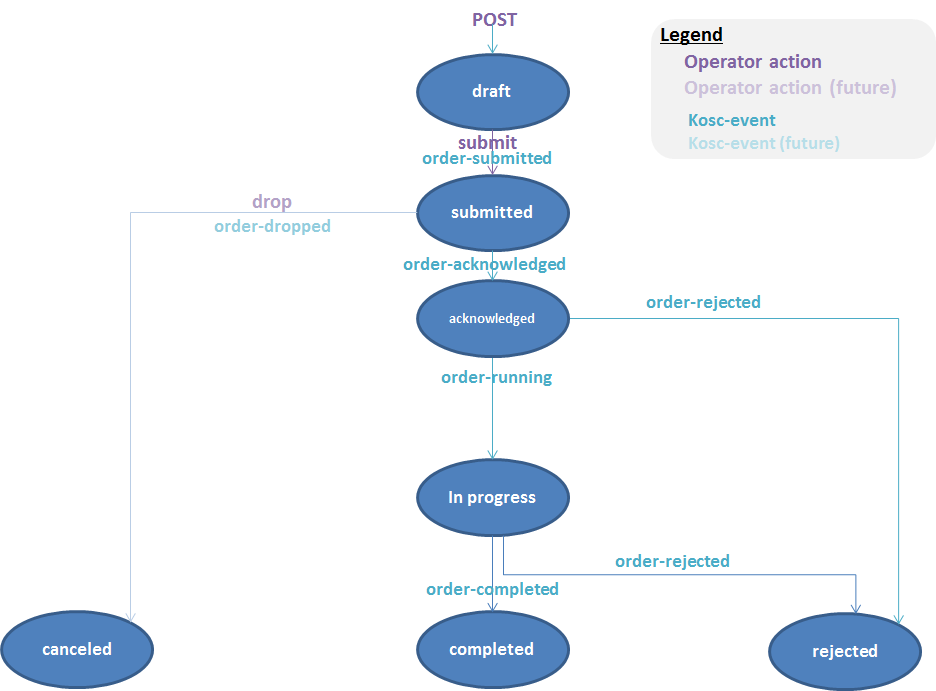Orders¶
Order entry¶
There are several types of orders or ORDER types: ACTIVATE, TERMINATE
1) A new service is created using the ACTIVATE order.
For copper, an activate order is defined by the type of activation:
activation of an active line
activation of an idle line
creation of a line from an active reference line for the same address, same premises and same owner (
create)creation of a line from an active line in the neighborhood for the same address, but different premises (
create_nearby)creation of a line from an active line in the neighborhood for a different address on the same sidewalk (
create_neighbour)
An existing service is terminated using the
TERMINATEorder.
During a new order creation, the ORDER state is DRAFT.
We use the term DRAFT ORDER. This facility allows you to fill in the
DRAFT ORDER with the available initial information and complete it
later on.
A draft order can also be deleted.
Appointments¶
When an order is placed for the construction of a line, an appointment must be set between the end customer and the local loop operator.
The platform allows you to check the available time slots of the local loop operator so that you can propose them to the end customer.
The platform allows you to book or modify the time slot selected by the end customer on that order.
The platform allows you to cancel an appointment.
The platform allows you to search for an appointment.
See the complete description of the appointment API here.
Contacts¶
To submit an order, you will need to provide a contact within your team.
The platform allows you to declare your contacts (name, last name, mail, phone numbers).
You can search for and modify contacts.
See the complete description of the contacts API here.
Submitting an order¶
Once the order complete, you submit it (submit) to Covage for execution.
The basic information to be provided prior to performing the submit operation depends on the order type and the product
See the complete description of the orders API here and the xDSL specifics here.
Order steps and order tracking¶
The steps following the order submission are as follows:
Order controls performed synchronously : completeness, syntax, grammar, frames of reference, etc.
Order eligibility control performed synchronously.
Order sending to the supplying operator.
Specific management workflow. For example: appointment negotiation, site visit, intermediate exchanges with
EVENTSandACTIONS.Finalization. For example: for an
activateorder, service activation, start of the billing process, and delivery report.
You can follow the progress of an order:
by searching for the order state and the follow-up fields of the different order milestones
by analyzing the
EVENTSreceived for that order, which notify of the state changes or the key events during order production
You can search for the events issued by the Covage platform. You can search for the events issued after a specific date.
Finalization¶
An activation order like activate is successful when
the following operations have been completed:
Covage creates the service (resources from Covage and from possible suppliers)
Covage commercially activates the service** (support, billing)
Covage assigns the new service an identifier that is shared with you
Covage sends an order report
An execution order like terminate is successful when the following operations have been completed:
Covage releases the technical resources initially assigned to the end customer (resources from Covage and from possible suppliers)
Covage sets the service state to terminated (no longer supported, end of billing)
Covage sends an order report
Life cycle¶
The xDSL order life cycle is described below
Activate¶

xDSL Activate Order State Diagram¶
The confirm action can be applied to an ACTIVATE order in PENDING state.
The cancel action can be applied to an ACTIVATE order in PENDING state.
Terminate¶

xDSL Terminate Order State Diagram¶